Home \ Knowledge Hub \ Focus on \ Focus On… Foot-and-Mouth Disease and Emergency Preparedness


01 Nov 2019
Focus On… Foot-and-Mouth Disease and Emergency Preparedness
SHARE
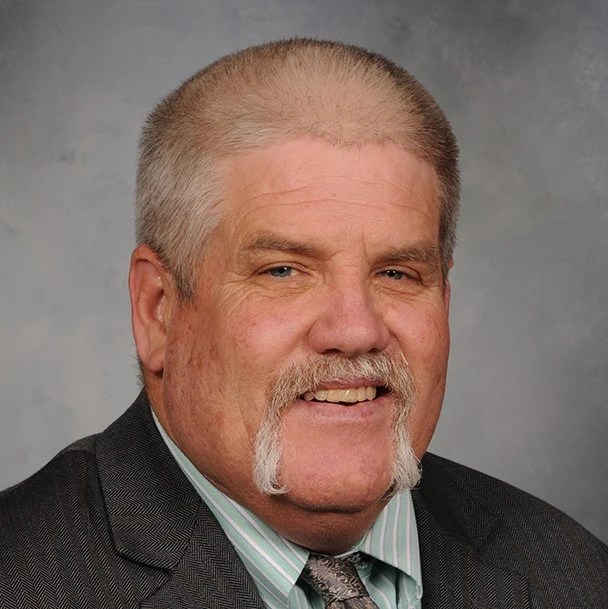
DR JUSTIN SMITH
Kansas Animal Health Commissioner
Outbreaks of diseases like foot-and-mouth disease (FMD) in free regions can be devastating. So how does a state like Kansas, sitting at the center of the United States and one of the top 5 states for livestock production, prepare for emergency outbreak situations? Find out as Kansas Animal Health Commissioner, Dr Justin Smith, explains how the state has become a leader in protecting the national food supply.
Livestock in Kansas – a wide range to protect
Agriculture is the number one industry in the state of Kansas, of which livestock production is the number one contributor. Kansas’ livestock sector is made up of numerous types of operations and the various production phases within those operations. Farms include cattle (both beef and dairy), swine, sheep, goats, and commercial poultry, which are hugely diverse in their size and scope. For instance, the beef industry involves production systems that include cow-calf, calf raisers, backgrounders, confinement feeders plus slaughter and commercial meat businesses, while the pork industry spans businesses that raise pigs from farrowing to meat processing. In addition to being considered one of the top 5 states in livestock production, Kansas also sits at the geographical center of the United States, thus making it a hub for livestock movement from coast to coast. Because Kansas is a net importer of livestock and because of the diverse nature and size of the industry, we are vulnerable and our exposure to the possibility of a disease introduction affecting one of our livestock operations is greatly enhanced.
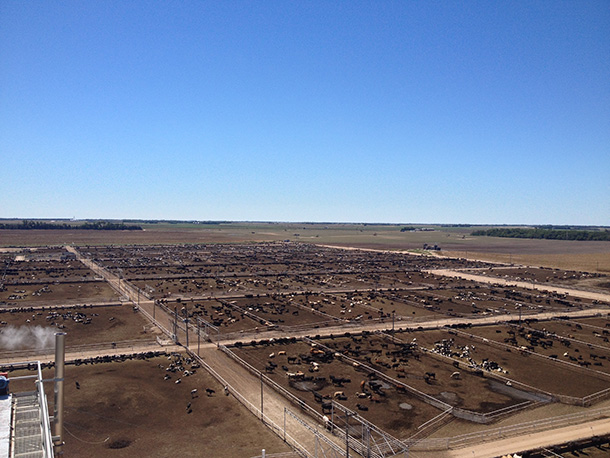
Kansas, sitting at the center of the United States and one of the top 5 states for livestock production, puts a lot of work into protecting the agriculture, its number one industry. Preparing for emergency outbreak situations is key for protecting the national food supply from the devastating effects of diseases like foot-and-mouth disease (FMD).
All of this contributes to the importance the state of Kansas has put on enhancing our preparedness and response capabilities to a foreign animal disease (FAD), such as Foot-and-Mouth Disease (FMD). Kansas Department of Agriculture, Division of Animal Health (KDAH) is the designated lead agency charged with the responsibility for the detection, eradication and prevention of infectious and contagious livestock diseases that have the potential of having a deleterious effect on the industry. Part of the KDAH core mission statement is the ability to respond to an FAD incursion in an effective manner that limits the negative impact.
FAD simulation exercises across the state
The ability to be effective means having the accessibility and dedication to practice our response and mitigation plans. Over the last 7 years, KDAH has either hosted or has been a key player in a multitude of simulation FAD response exercises, both tabletop and functional. We have made the commitment to host a large-scale functional FAD exercise on an annual basis. This exercise consists of a 4-day animal disease scenario that involves the play of local, state and federal animal health officials, governmental policy makers, both state and national, animal health responders, and, most importantly, industry stakeholders. By having industry actively participate, we can engage their staff and utilize their real-time data to provide the opportunity to test and improve their own response and better understand our efforts and what we may ask of them in an FAD incursion. An important outcome of these exercises is a better understanding of the impact of a disease incident and anticipating the needs of those that are affected by it. In turn, we provide education and insight as to what can be expected.
A play of stakeholders across local, state and federal levels – active participation of public sector and industry provides opportunity to test and improve response.
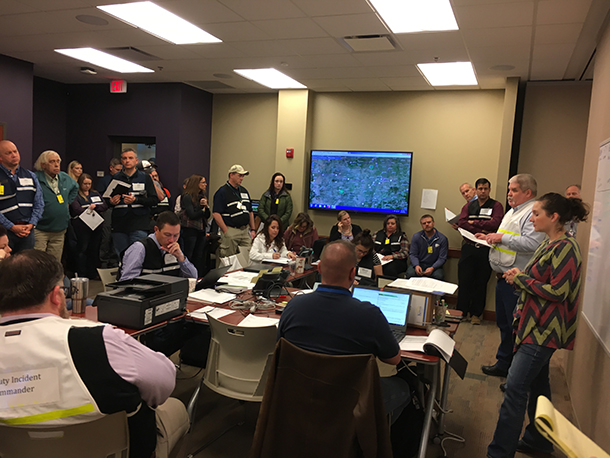
Through our FMD exercises and trainings across the state, it has quickly become evident that stopping the movement of susceptible species (cattle, swine, sheep, and goats) will prove critical in preventing the spread of the disease. Obviously, this strategy is not easy to accomplish. Kansas emergency planners from a variety of organizations have spent years working with law enforcement, transportation officials, industry representatives, and elected officials to develop plans and procedures to make the strategy actionable. Critical response strategies must be implemented immediately to obtain the maximum benefit of industry and business continuity.
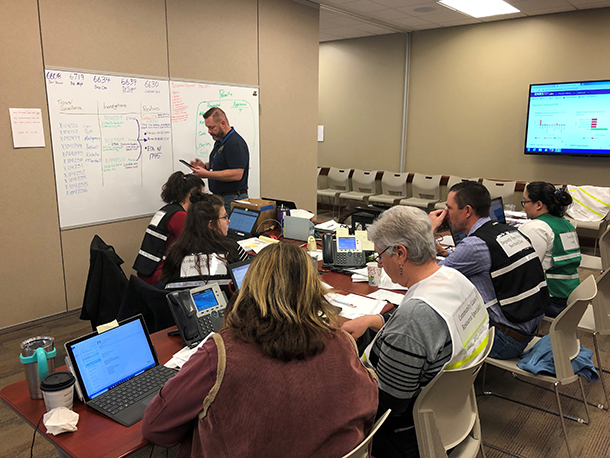
Secure Food Supply Plans – business continuity without spreading the disease
At the same time, we realized that a prolonged stoppage of animal movement would devastate the industry. Milk needs to move immediately to avoid shortages and environmental concerns. Pigs outgrow pens. Fat cattle need to move to slaughter. How do we allow movement without spreading the disease?
Prolonged stoppage would devastate the industry. How do we allow movement without spreading the disease? Returning business continuity back to a level of normalcy is a major component of responding to a disease incident.
Secure Food Supply Plans, spearheaded by the Center for Food Security and Public Health at Iowa State University with the assistance of the USDA and checkoff organizations, have become the strategy cornerstone that Kansas will leverage for mitigating the damage an FAD may have. A major component of responding to a disease incident is returning business continuity back to some level of normalcy as quickly as possible. This is a multilegged strategy that includes pre-approved permitting of the commodity, substantiating the necessary lab tests that are required to prove lack of infection, and validating that enhanced biosecurity measures are implemented and upheld. Examples of the biosecurity measures that make up a complete package are a predetermined line-of-separation, management and employee education, and enhanced surveillance. KDAH has taken an active role in helping build these plans, ranging from producer and veterinarian consultation to on-site visits. The focus of these measures centers around an operation-specific biosecurity plan and disease preparedness prior to an actual outbreak.
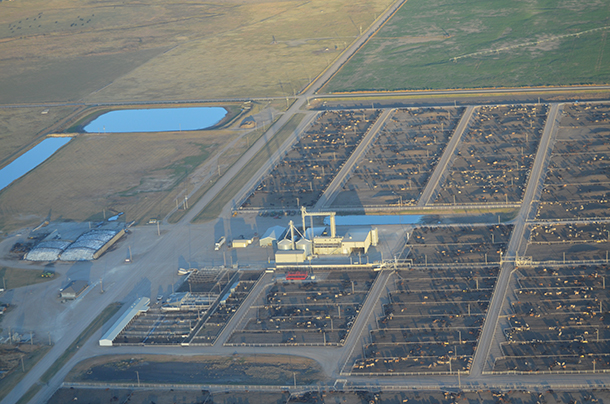
Kansas has become a leader in protecting the national food supply through the various initiatives it has undertaken. The overarching goal is to provide Kansas farmers, ranchers, and agribusinesses with the framework and tools to create and manage operation-specific biosecurity plans designed to limit disease spread, allow for animal movement, and protect the economic viability of the Kansas animal agriculture industry in the face of a foreign animal disease outbreak.
DR JUSTIN SMITH
Kansas Animal Health Commissioner
The views and opinions expressed in this article are those of the author.

